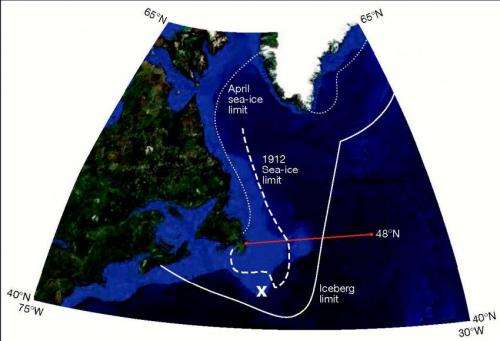Did an exceptional iceberg sink the Titanic?

While the sinking of the Titanic in 1912 is typically blamed on human, design and construction errors, a new Significance paper points to 2 other unfavorable factors outside human control: there were a greater number of icebergs than normal that year, and weather conditions had driven them further south, and earlier in the year, than was usual.
The paper also notes that iceberg discharge from glaciers is increasing, with more heavy iceberg years since the 1980s than before, and increasing global warming will likely cause this trend to continue.
"As use of the Arctic increases in the future with declining sea-ice, and as polar ice sheets are increasingly losing mass as well, the iceberg risk is likely to increase in the future, rather than decline," said co-author Professor Grant Bigg.
More information: Bigg, G. and Billings, S. (2014), The iceberg risk in the Titanic year of 1912: Was it exceptional?. Significance, 11: 6. DOI: 10.1111/j.1740-9713.2014.00746.x
Journal information: Significance
Provided by Wiley


















